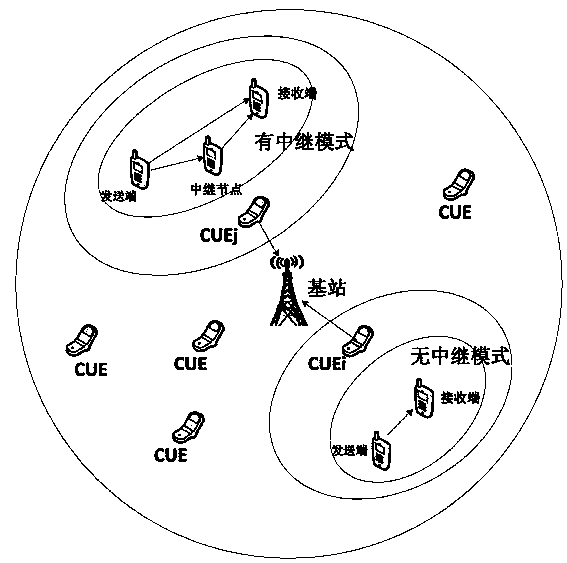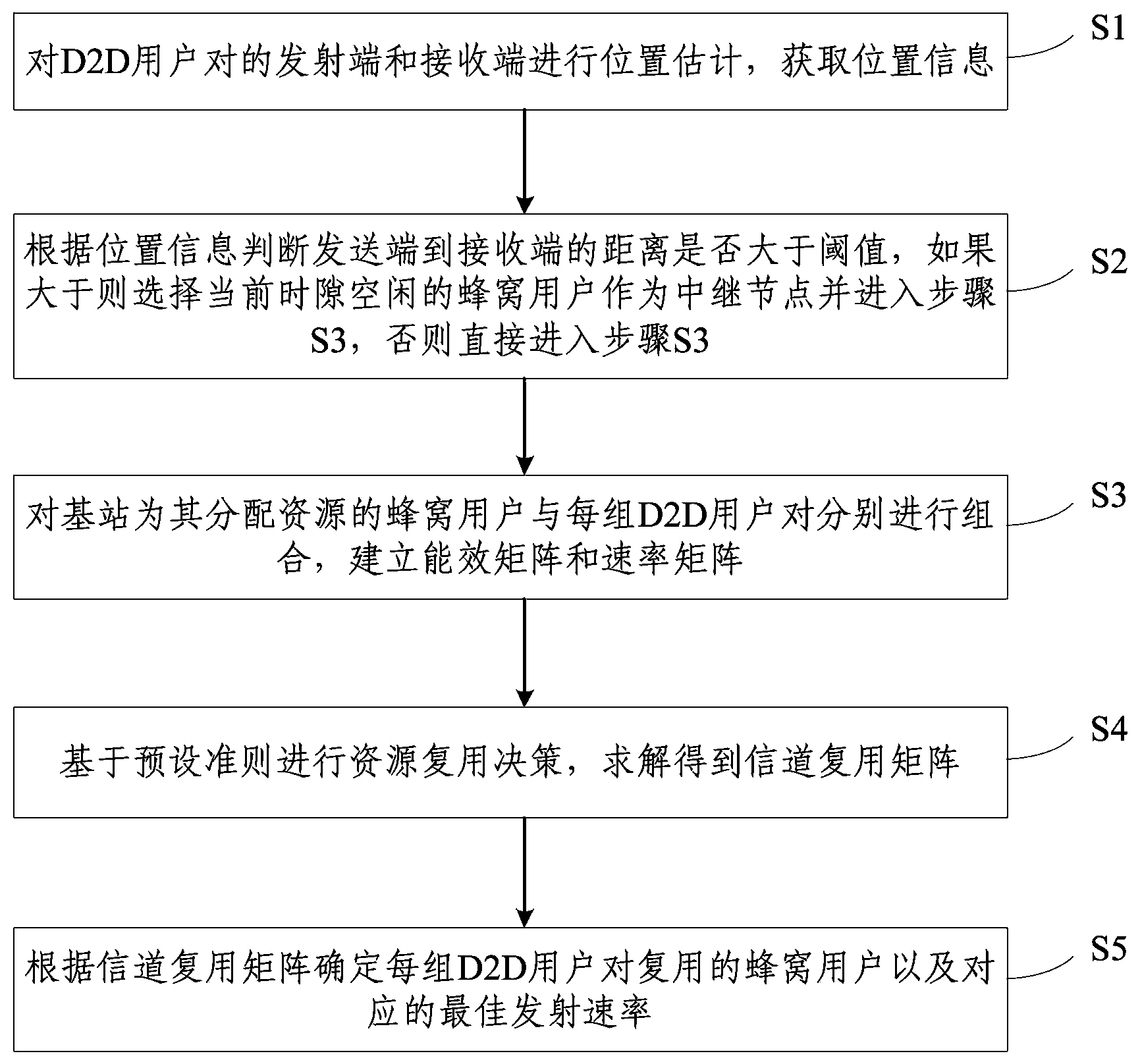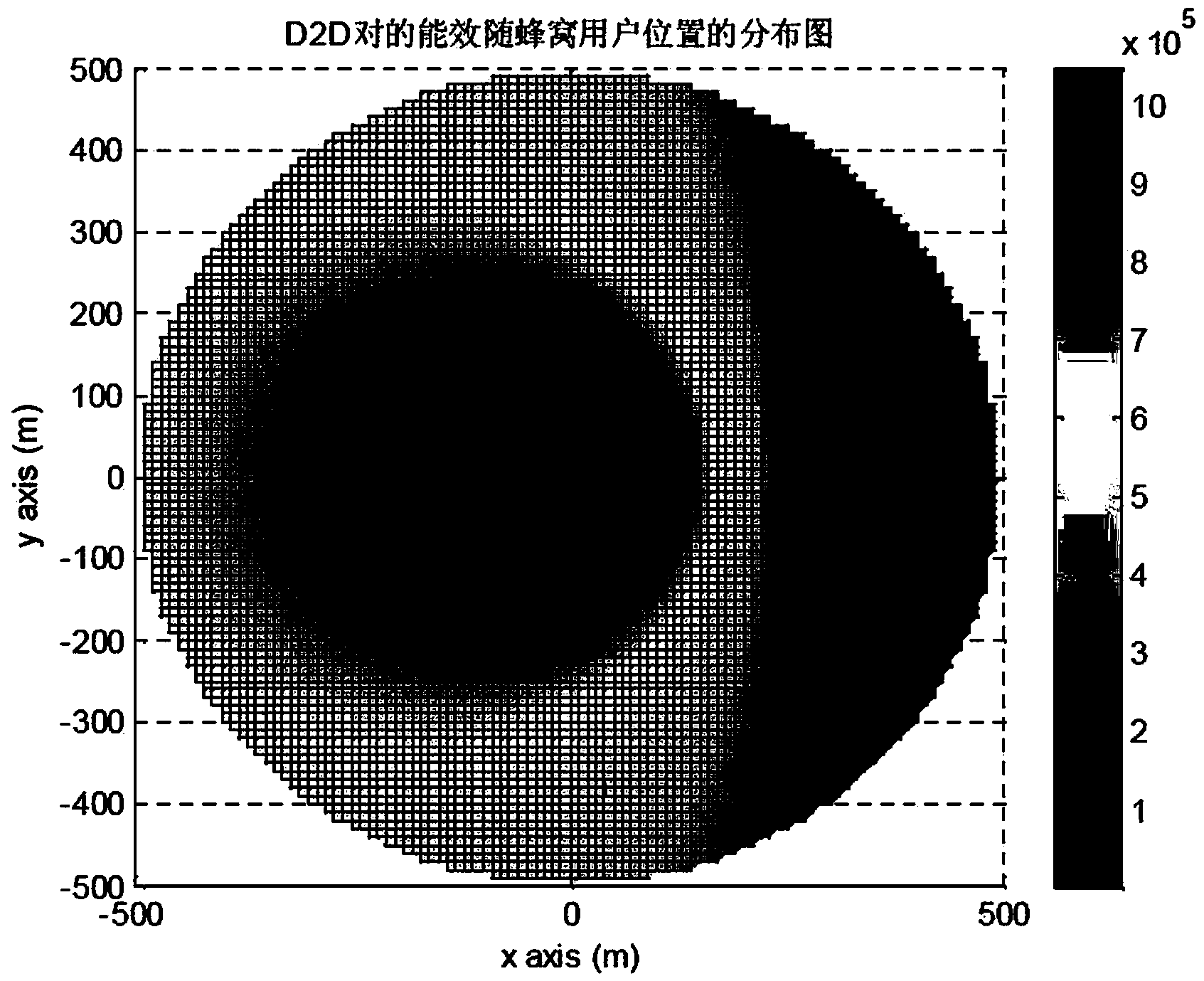Resource reuse method and system for improving energy efficiency of D2D (device-to-device) system
A technology of resource reuse and energy efficiency, applied in the field of communication, can solve the problems of increased energy consumption of wireless networks, pollution, and inability to improve the overall energy efficiency of the system.
- Summary
- Abstract
- Description
- Claims
- Application Information
AI Technical Summary
Problems solved by technology
Method used
Image
Examples
Embodiment Construction
[0053] The specific implementation manners of the present invention will be further described in detail below in conjunction with the accompanying drawings and embodiments. The following examples are used to illustrate the present invention, but are not intended to limit the scope of the present invention.
[0054] In a single cell, there are multiple groups of D2D user pairs that have D2D communication requirements, and the base station needs to select a cellular user for each group of D2D user pairs to perform resource multiplexing. The basis for the base station to make multiplexing decisions on resources is to maximize the total energy efficiency of all D2D user pairs in the cell under the premise of ensuring that the communication rate of each group of D2D user pairs is higher than the target rate. Through theoretical deduction, it is found that the energy efficiency of each group of D2D user pairs is mainly determined by the location of the D2D user pair (including the s...
PUM
 Login to View More
Login to View More Abstract
Description
Claims
Application Information
 Login to View More
Login to View More - R&D
- Intellectual Property
- Life Sciences
- Materials
- Tech Scout
- Unparalleled Data Quality
- Higher Quality Content
- 60% Fewer Hallucinations
Browse by: Latest US Patents, China's latest patents, Technical Efficacy Thesaurus, Application Domain, Technology Topic, Popular Technical Reports.
© 2025 PatSnap. All rights reserved.Legal|Privacy policy|Modern Slavery Act Transparency Statement|Sitemap|About US| Contact US: help@patsnap.com



